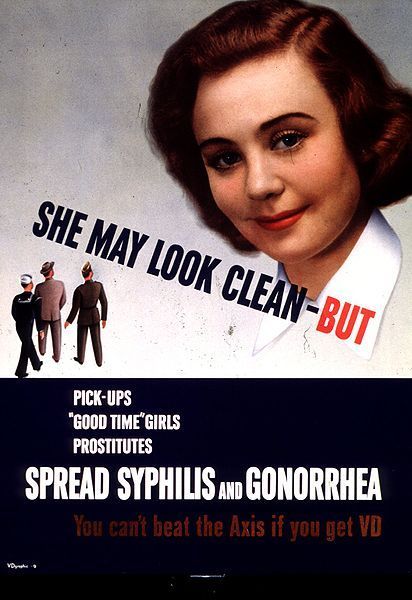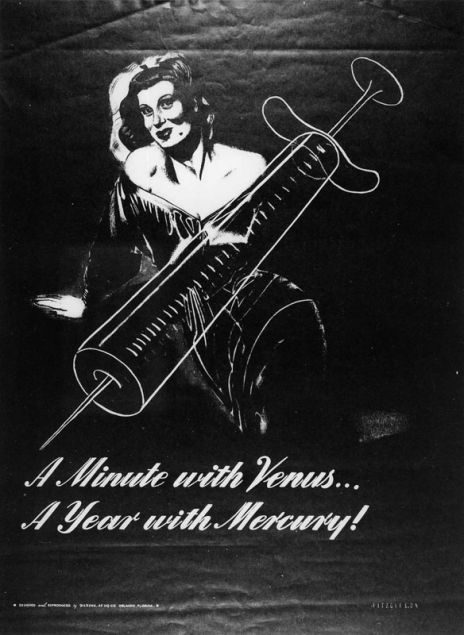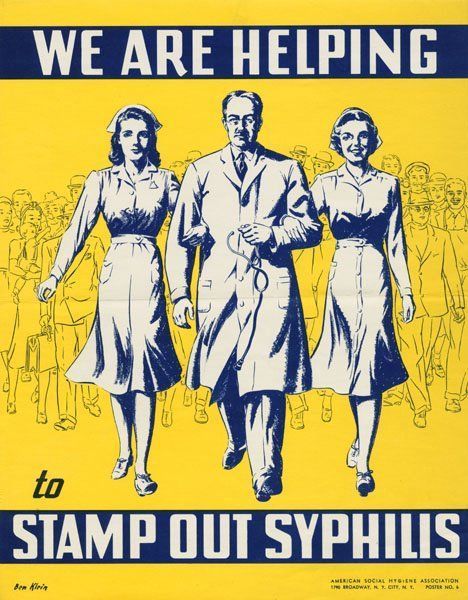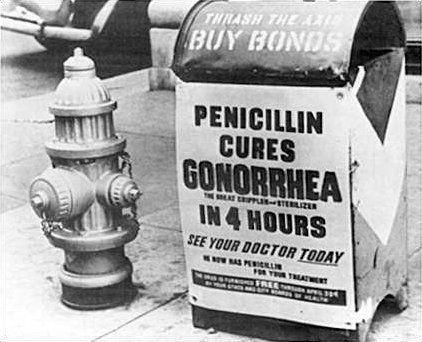Gonorrhoea and syphilis. Two microscopic organisms that over the years have removed more men from the battlefield of various conflicts than fists, bayonets, bullets, sabres, mustard gas, grenades, mortars, tanks or any creative combination thereof, combined.
An address by Surgeon General Gorgas before the General Sessions of the American Public Health Association in August 1917 expresses the wish that if he were provided a magic wand and were given the choice to eradicate wounds or venereal disease, he would choose venereal disease. "A man with a flesh wound through the thigh is back in the trenches within ten days or two weeks, frequently in less time. If he contracts a venereal disease, his average disability is very much longer. In other words, to the commanding general, the loss is greater for a man who contracts gonorrhea than for a man who is shot through the thigh, and if the commanding general could lay aside all question of morality,he would probably choose the eradication of venereal disease rather than the prevention of wounds."
Sexually transmitted infections (STIs) the more modern term for venereal disease have been a common problem during war time. With a large concentration of uprooted men, low wages and social upheaval prostitution is a usual side effect. Army commands throughout history have done their best to combat these effects with public health campaigns, which, for the most part were of dubious efficacy. In the American civil war there was a reported rate of 80 per 1000 men per year of cases of venereal disease. By the time World War II rolled around some American units were reported to have rates of 325 per 1000 per year.
Syphilis is a spirochete that can cause a lifelong infection that can lead to disfigurement, neurological and cardiological manifestations. Typically it presented with ulcerations on the genitals. Treatment prior to antibiotics was excision of the ulcerations and the injections of mercury or salvarsan which is a form of arsenic. These injections continued for up to a year, were extremely painful, had toxic side effects and didn't always work.
Gonorrhea is caused by a bacteria and can be asymptomatic. It usually presents initially with discharge from the penis but can progress to inflammation in the pelvis, joints, eyes, and heart valves. Prior to antibiotics the initial treatment for this was not for the faint hearted, it involved a washout of the urethra with a big syringe. Unsurprisingly, most men did not present in the early stages of infection. Treatment at other stages was mostly supportive and unsurprisingly, not very successful.
Eventually army commands turned their thoughts away from prevention and towards the concept of prophylaxis.
The public health posters you have seen throughout this entry did not seem to be reducing infection rates, nor were constant lectures and movies shown to men during world war II. Attempts to ban brothels or threats to dock pay were equally ineffective. Condoms were handed out, but use does not seem to have been widespread. Finally the British and US armies set up Green Cross stations where men who were exposed could present for douches of potassium permaganate and mercury and injections of salvarsan. Unfortunately the lack of needles and the poor sterilisation of same also exposed the men to an increased risk of hepatitis. Besides which, given the unpleasantness of the procedure, not many men volunteered for it anyway.
Then in 1943 a man named Howard Florey began testing a new drug named penicillin on allied troops. Amazingly gonorrhea could clear within a day. Syphilis within a week. By 1944 it had been rolled out to the entire army. The scourge of venereal disease was a scourge no longer.
Nowadays STIs remain a big interest and public health problem for armies, however treatments are better and the public health message of the condom seems to have finally filtered through (sort of).
Because it behooves me to mention that even though the perception is that gonorrhoea can be easily treated, two years ago a resistant form of gonorrhea was reported, which appears to be spreading. As of now we have no antibiotics with which to treat it.
The Clap is back.
Think about that, and wear a condom.
(1)Gorgas, W.C (Feb 1918) "Venereal Diseases and the War" American Journal of Public Health, Vol. VIII, No 2
(2) Echols, Michael Dr. Treatment of Venereal Diseases during the Civil War [http://www.braceface.com/medical/Civil_War_Articles_Civil_War_Venereal_Disease_treatment.htm] Last updated May 6 2012
(3) Exceprts from the practitioners guide to medical treatment - 1915 - found here - http://www.vlib.us/medical/syphilis.htm and here http://www.vlib.us/medical/gc.htm
(5) CDC's statement on gonnorhea - http://www.cdc.gov/std/Gonorrhea/arg/basic.htm
(6) Rasnake, Mark, (2005) "History of US Military Contributions to the Study of Sexually Transmitted Diseases Military Medicine, vol. 170 4:61
(7) Brown, Kevin, (2008) Fighting Fit: Health Medicine and War in the Twentieth Century, The History Press, Gloustershire





Eeep, that's an alarming thought. It's as though there's something out there that doesn't want humans to breed any more...
ReplyDeleteNo, Katie, it wants us to breed very much. That's how it spreads....
DeleteInteresting post. But this sentence confuses me:
ReplyDelete"Eventually army commands turned their thoughts away from prevention and towards the concept of prophylaxis."
I thought prophylaxis was prevention. And I thought they had been treating rather than preventing?
Sorry if I'm thick, but I don't understand what you're saying here.
No it's not very well worded is it I'll take another look!
DeleteI meant they stopped looking at abstinence programs and started